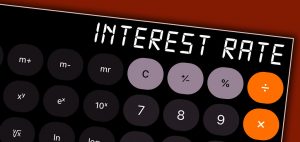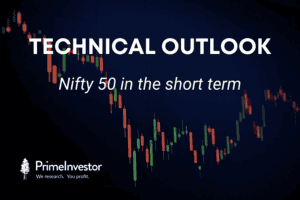- After slashing repo rates from 8 to 5.15 per cent over five years, RBI’s MPC is on a pause
- Galloping inflation and global tensions are forcing MPC to rethink
- Rate hikes are possible in 2020 if above factors aggravate
- With corporate bond yields falling, AAA debt is unlikely to repeat its bumper returns in 2020
- The fear factor around defaults is likely to keep credit spreads elevated
The Indian debt market threw up multiple money-making opportunities for investors in 2019. 2020 though, is likely to prove far more challenging.
Interest rates are likely to halt their steady slide over the last five years to display more volatility this year. The compensation for taking on credit risks is likely to shrink.
Rate moves: No more smooth sailing
The predictable decline in interest rates in 2019 helped investors who were invested in medium to long-duration government securities pocket easy gains from steadily rising prices.
By January 2019, it was already quite apparent that domestic interest rates were headed South. The Monetary Policy Committee (MPC) of RBI was pausing for breath after cutting its repo rate from 8 per cent to 6.5 per cent in the preceding five years.
But with falling quarterly GDP growth and low inflation rates, the MPC resumed its repo rate cuts to trim them from 6.5 per cent in January 2019 to 5.15 per cent by October 2019. Market interest rates fell for the first half of the year, pre-empting the MPC, and stayed at fairly low levels thereafter. The yield on the 10-year government security fell from 7.4 per cent in January to 6.3 percent in June, before rising a bit to close the year at 6.6 per cent. The falling yields helped gilt funds and dynamic bond funds position themselves early in long duration bonds to make gains from rising prices. 2019 saw a 10.6 per cent average return on the gilt fund category and 7.4 per cent on the dynamic bond fund category.
Heading into 2020 however, the interest rate direction is far more tricky to call. The MPC, after last trimming its repo rate to 5.15 per cent in October 2019 has been sitting on the fence since.
Three factors suggest that repo rates may not fall a lot from here, and in fact may even reverse direction.
- For one, the history of Indian rate cycles over the last 20 years shows that repo rates in India usually tend to bottom out at 4.75-5 per cent, pretty close to current levels.
- Two, under the inflation targeting framework, the MPC has been extra-hawkish on rates, seldom wiling to lower them if CPI inflation is elevated. After staying below the MPC target of 4 per cent until September 2019, India’s CPI inflation rate has galloped in the last three months standing at a shocking 7.35 per cent in December 2019.
- Three, though it may not admit it, the MPC rate cuts also factor in global rate movements, the exchange rate and the capital flows outlook. Here, the recent re-emergence of geopolitical tensions which have weakened the Rupee reduce the wiggle room for MPC to lower rates further.
Market interest rates, meanwhile, seem to have sensed the bottoming out of repo rates and have reversed direction in recent months, with the 10-year sec yield rising from 6.3 per cent in June/July 2019 to 6.6 per cent now. While rising inflation rates and worries about the Centre overshooting its fiscal deficit targets are exerting upward pressure on these rates, RBI has been trying hard to reduce yields on long-term gilts through Operation Twist (selling short term gilts and buying long-term ones in an effort to flatten out the yield curve).
In the short run, this tug-of-war between debt market fundamentals and RBI’s interventions are likely to contribute to sharp two-way moves in the 10-year g-sec, making duration calls dicey. Over the medium term though, we think that fundamental factors such as the CPI inflation trajectory and the size of Central borrowings in budget 2021 will likely re-assert their influence on market interest rates. These factors presently point to market interest rates rising from current levels of 6.6 per cent. This could make for a bumpy ride for long-term bondholders in 2020. The trajectory for short-term rates seems upward bound, given that even RBI actions are supportive of this.
Credit calls: Shrinking rewards
If 2019 proved to be a rewarding year for debt investors looking to take duration calls, it proved to be a frustrating one for those looking to gain from credit calls.
Shrinking rates and spreads |
Persisting worries about NBFC and corporate bond defaults and periodic downgrades and defaults from unexpected quarters prompted a flight to safety in favour of high-quality bonds. January 2019 began with ten-year AAA rated corporate bonds offering yields as high as 8.6-8.7 per cent – a 120 basis point spread over comparable government securities. Five-year corporate bonds rated AA offered an even higher yield of 9-9.10 per cent and NBFC bonds with an AA rating offered 9.4 -9.5 per cent. These elevated yields at the start of the year, combined with the subsequent decline in rates, helped investors in safe categories of debt funds such as PSU & Banking and Corporate Bond funds pocket hefty returns from accrued interest as well as capital gains in 2019. PSU and Banking debt funds averaged a 9.7 per cent return in 2019, while Corporate Bond funds averaged 8.8 per cent.
As market interest rates have tumbled though, those corporate bond yields have moderated. By January 2020, the yields on 10-year AAA rated corporate bonds had dipped to 7.7-7.8 per cent. Five-year AA-rated corporate and NBFC bonds are currently at yields of 7.8 per cent and 8.4 per cent respectively.
With market rates moderating, the rewards for investing in high quality bonds have tumbled. The spreads that AAA corporate bonds trade at over comparable g-secs has shrunk from over 140 basis points in October 2019, to just about 100 basis points now. While this is still higher than the 70-80 basis point norm over a long period, the lower starting yields make AAA rated corporate bonds and PSU a less rewarding proposition than they were at the same time last year.
Corporate bonds rated AA and lower, as well as bonds from NBFCs have seen a moderation in rates too in the past year. But they continue to trade at reasonably high spreads over top rated bonds. Currently, AA rated corporate bonds offer 60-65 basis points spreads over AAA bonds of the same tenure. NBFCs offer 115-120 basis point in extra returns. This indicates that the fear surrounding NBFC and corporate bond defaults in the market has not fully abated.
These trends suggest that in 2020, the rewards for sticking to high quality corporate bonds or PSU/Banking bonds are unlikely to be as handsome as they were last year. Given that the easy gains from duration calls are past, investors in debt funds may face the Hobson’s choice of either taking on higher credit risks or settling for a modest return.
So based on the above outlook, how should debt investors position their investments in 2020? Read our Debt Market Strategy 2020 (only for subscribers)





